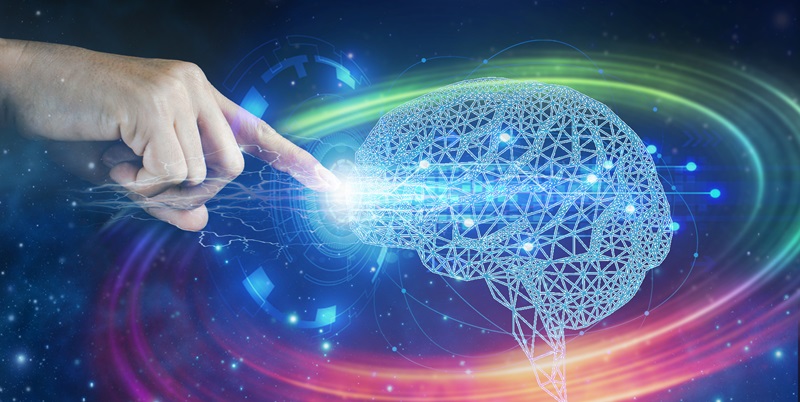Neural networks are the backbone of modern data science, serving as advanced systems that allow the complex interpretation and processing of vast data sets with increasing levels of accuracy. Different types of neural network architectures have emerged, each tailored for specialized tasks within the realm of data analysis. Some of these models excel at recognizing patterns, while others are crafted for predicting sequences or interpreting time series data. As these networks have advanced, their roles have expanded from simple classification tasks to more nuanced applications such as natural language processing, computer vision, and even guiding autonomous systems. This diversification in architecture has been crucial, allowing for a tailored approach in machine learning tasks to maximize accuracy and efficiency, enhancing the ability for machines to assist in data-driven insights and decision-making processes.
Convolutional Neural Networks (CNNs)
Transforming Computer Vision
Convolutional Neural Networks (CNNs) play a crucial role in enhancing computer vision, which underpins the functionality of self-driving cars, medical diagnostics, and facial recognition systems. Leveraging convolutional layers that serve as specialized feature detectors, CNNs excel at identifying patterns in visual data. These networks process images through a hierarchical structure, which allows them to capture both simple and complex features systematically, building up a detailed understanding of the visual input. This capability is achieved as CNNs convolve over images, isolate significant elements, and integrate them to form a comprehensive picture, ensuring precision in tasks like image classification and object detection. Their effectiveness and efficiency in handling visual information have made them a cornerstone technology in sectors requiring advanced image analysis.
Spatial Feature Recognition and Analysis
Convolutional Neural Networks (CNNs) harness a layered hierarchical structure akin to our own vision system to analyze visual data. They begin by detecting simple features like edges, gradually building up to complex patterns. This strategic layering allows CNNs to excel in tasks like image categorization and object recognition, surpassing older techniques that lacked this sophisticated approach. The robust nature of CNNs also means they’re adept at dealing with a range of image inconsistencies, maintaining high accuracy across a variety of visual challenges. This capability has revolutionized the field, making CNNs the go-to technology for a multitude of applications in image processing and beyond. Their adaptability and depth in learning have made them a cornerstone in the rapid advancement of computer vision.
Recurrent Neural Networks (RNNs) and LSTMs
Handling Sequential Data with RNNs
Recurrent Neural Networks (RNNs) introduced a paradigm shift in neural network capabilities for handling sequential data such as text and time series. Unlike traditional feedforward networks, RNNs are equipped with a form of memory that allows them to retain information over successive time steps. This feature is especially beneficial for processing and understanding language, where the order and context of words are critical for interpretation. In natural language processing tasks, RNNs’ ability to recognize patterns in sequences of words has proven instrumental in creating models that can understand and generate human-like text. By effectively learning from sequences and their dependencies, RNNs provide a robust architectural framework that supports advancements in the evolving field of artificial intelligence as it relates to sequential data analysis.
Overcoming Challenges with LSTMs
Recurrent Neural Networks (RNNs) showed initial promise in handling sequential data but faced the vanishing gradient problem, which made learning from distant data points challenging. This issue impacts the network’s capacity to learn from sequences, where inputs crucial for the prediction are separated by less significant ones. To overcome this, Long Short-Term Memory Networks (LSTMs) were developed. LSTMs are adept at tasks involving complex sequences because they have unique memory cells and gates that manage information flow. They maintain and access information over extended sequences more effectively than traditional RNNs, which allows them to tackle long-range dependencies. LSTMs use this mechanism to excel in tasks like speech recognition, where understanding context over time is vital. Moreover, in machine translation, they can capture the nuances and grammar of entire sentences. This advancement addresses the limitations of RNNs and significantly boosts performance in many sequential processing tasks.
Generative Adversarial Networks (GANs)
Pioneering Generative Modeling
Generative Adversarial Networks, or GANs, have revolutionized the field of generative modeling with their unique framework. This innovative machine learning technique involves two neural networks: the generator, which creates new data instances, and the discriminator, which evaluates them. As they train in tandem, the generator improves its ability to produce data that is increasingly indistinguishable from authentic samples.
These advancements via GANs have far-reaching implications. They not only enhance the creation of high-quality synthetic data but also have applications in producing art, realistically aging faces in photographs, and generating text that mimics human writing. The interplay between the dueling networks is key, pushing the boundaries of what’s possible in artificial creativity and data synthesis. This technology has become a foundational tool in the evolution of AI’s capacity to generate complex, accurate, and diverse outputs that mirror real-world data.
Advancing Realistic Image Generation
The creativity demonstrated by GANs in producing high-fidelity images has been particularly remarkable. Applications extend to style transfer, where the aesthetic of one image is applied to another, effectively reimagining the content with different stylistic elements. The versatility of GANs in generating and refining images has posed both exciting opportunities and ethical challenges, considering their ability to produce deepfake content that can be nearly indistinguishable from authentic footage.
In conclusion, from the intricate spatial analysis of CNNs to the sequential understanding of RNNs and LSTMs, and the creative generative capabilities of GANs, these architectures have been pivotal in propelling data science forward. Each framework offers a unique lens through which machines comprehend and interact with the world, hinting at even more sophisticated and nuanced neural networks in the future.

